I love history myths, especially those related to fashion. For instance, I have done extensive research on both misconceptions around the idea that the bicycle craze led to the emergence of women wearing pants (or “bloomers”) and the many myths about the use of corsets in the 19th century. In my study into the history of corsets, I came across many references to “fainting couches” being used to rescue women from falling upon the floor when fainting due to “tight lacing”
Do you have a chaise or fainting couch at home? Would you like to know the history behind the design? Let’s take a look!
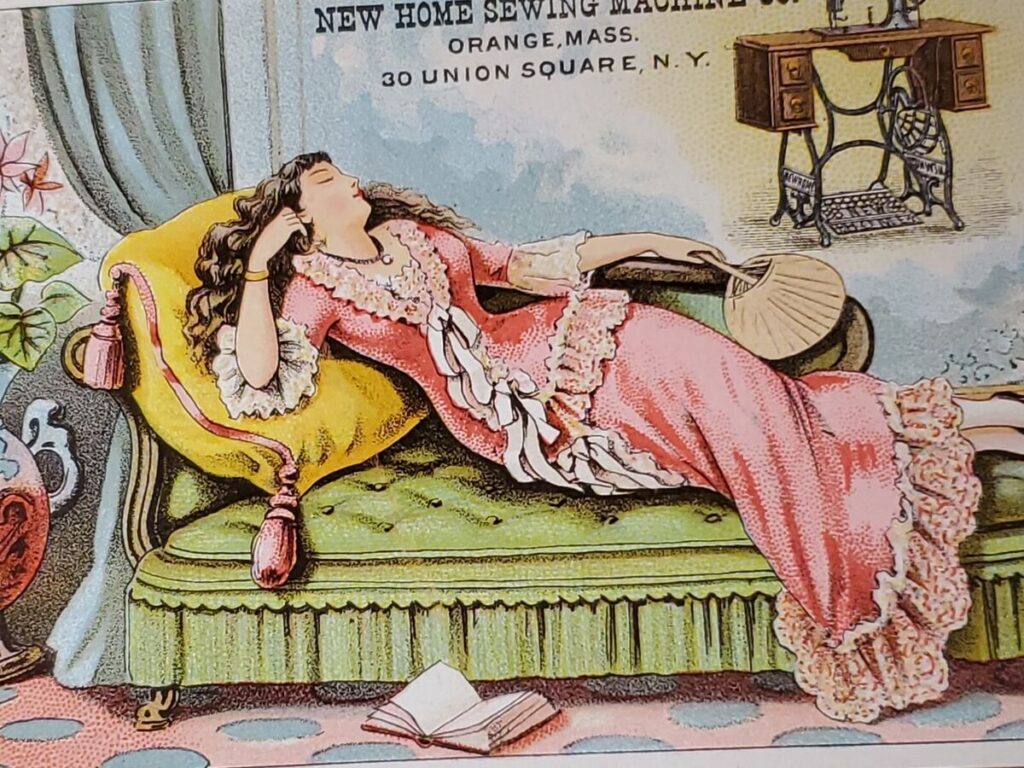
Fainting couches: in the style of the Greeks
So, where did the design come from before supposedly being used for safety purposes? Rather than being invented by clever inventors, the style was inspired by couches and beds used by ancient Greeks and Egyptians. These styles trended big time in the 19th century. This interest is well documented. For further reference, you can read:
Victorian Culture and Classical Antiquity: Art, Opera, Fiction, and the Proclamation of Modernity
The unique style of a couch with one raised side was classically Ancient Greek/Egyptian. You can see some great examples below.
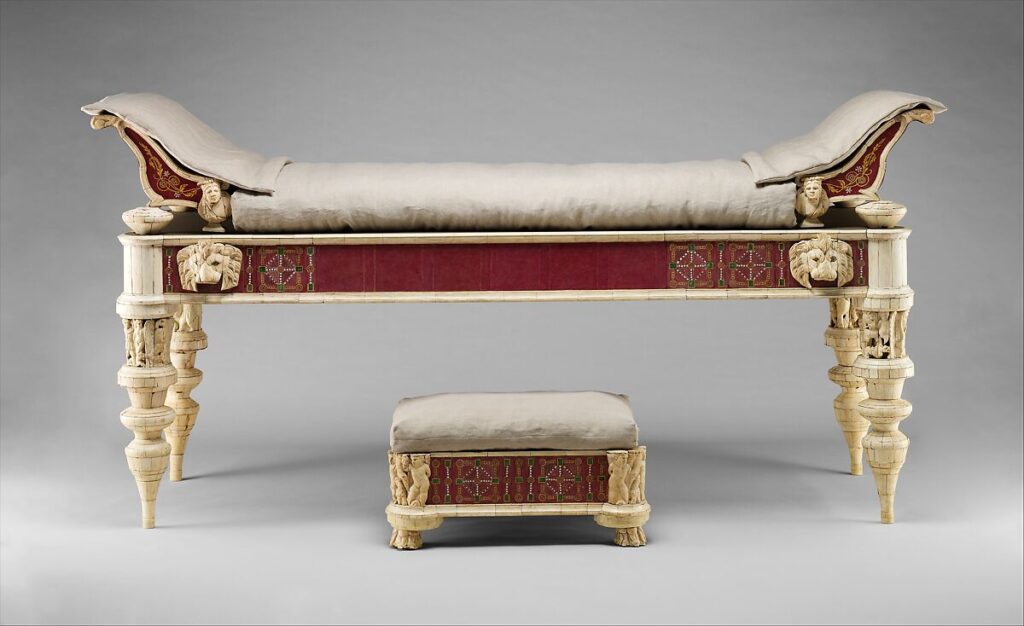
MetMuseum
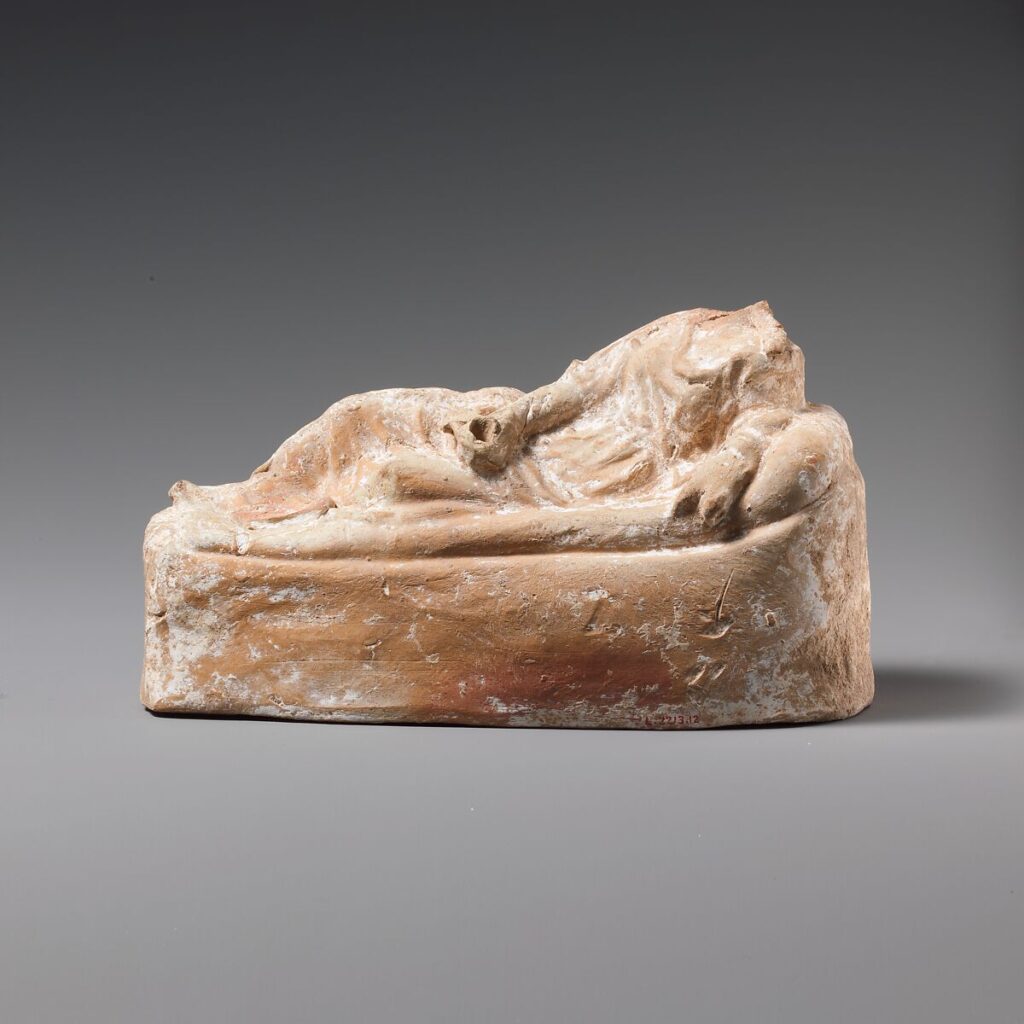
MetMuseum
A cure for the dangers of tight lacing?
In my research for the post, I came upon so many references about “fainting couches” being necessary for protecting fainting women. Alas, dear reader, as you may have guessed, this could not be further from the truth. There is no basis for this theory at all. Let’s consider a few things:
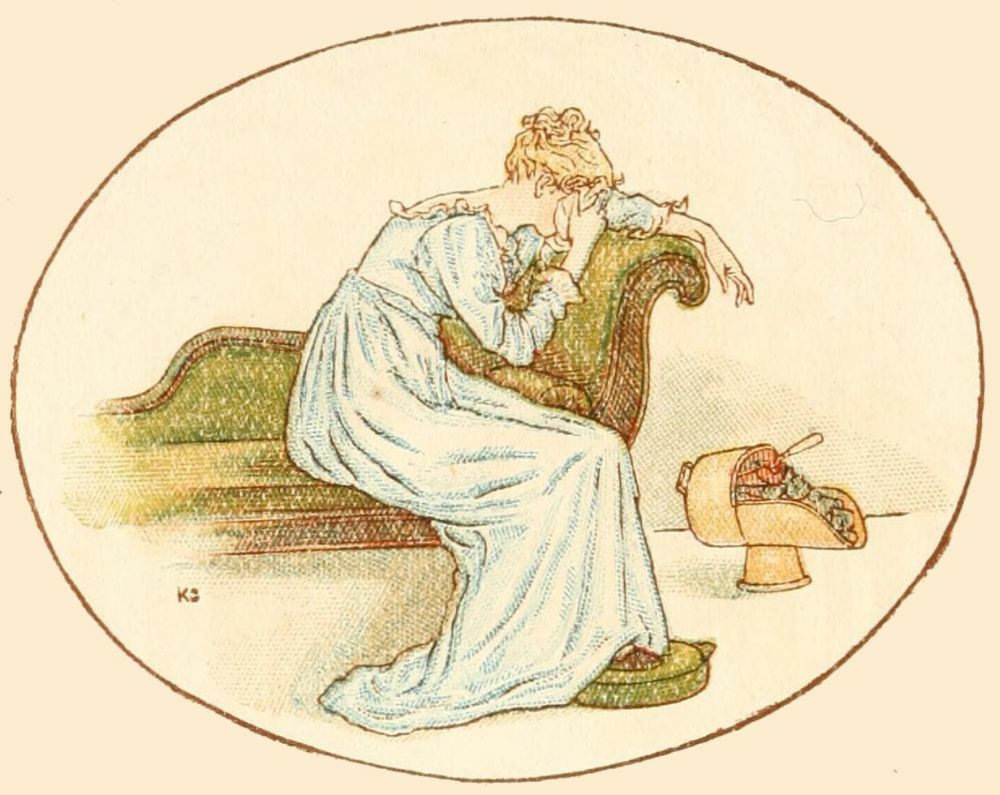
-If a woman were to faint suddenly, what would the chances be that she would even be near a “fainting couch?”
-Wouldn’t a woman be just as likely to faint in public, without said couch to catch her?
-Have you ever heard a reference to this style of couch being used in any content/literature from the 19th century?
-And finally, as we have covered in this blog, the idea that women wore debilitatingly tight corsets is yet another fashion myth. It was very rare, if not unheard of, for women to lace their corsets tightly for the purpose of achieving a smaller waist.
I also came across design concepts this this style of couch, created in the Regency era when corsets were not even worn due to the flowing nature of dresses at the time.

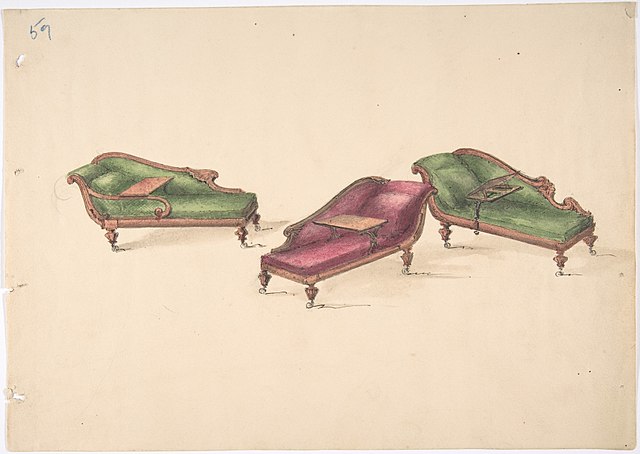
Want to learn about more history myths? Sign up for our newsletter so you don’t miss a thing.
Fainting couches: a most modern concept
Another piece of evidence that points to the idea that the one-sided couches were simply a trend is the use of the term through time. Google Books Ngram Viewer tracks the use of words from books over time. The first use of the word was in roughly 1960, skyrocketing in the early 2000s.
Isn’t it interesting to see how quickly a myth can be formed?
How were “fainting couches” really used?
This style of couch did actually serve a purpose, and it was one often for women.
First, they were a great size and shape for reading, a popular pastime for women at the time. I came across many paintings depicting the couch being used for this purpose.
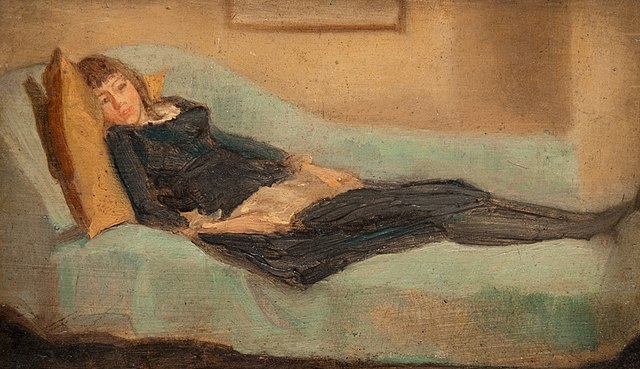
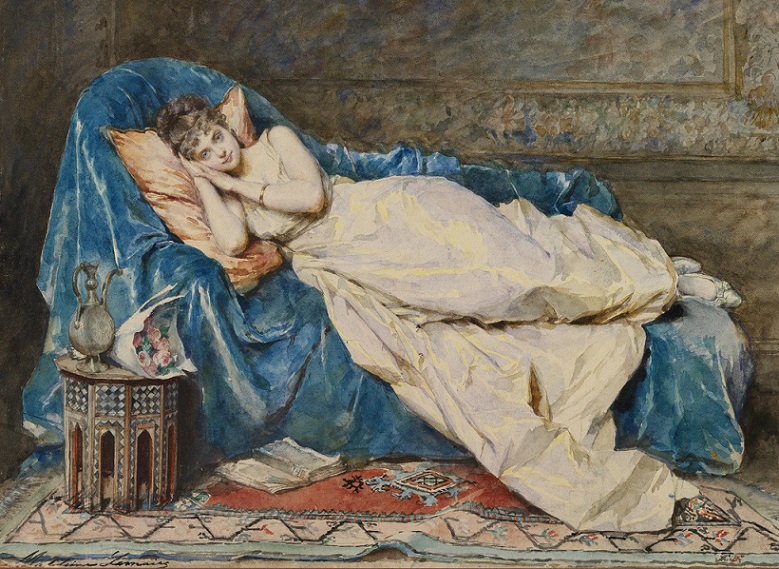
Chaises were also found in many bedrooms of wealthy women. Because of their busy schedules and the fact that they changed multiple times a day, they often retreated for downtime in their rooms during the day. Not wanting to disturb a nicely made bed, the couch provided a wonderful alternative.
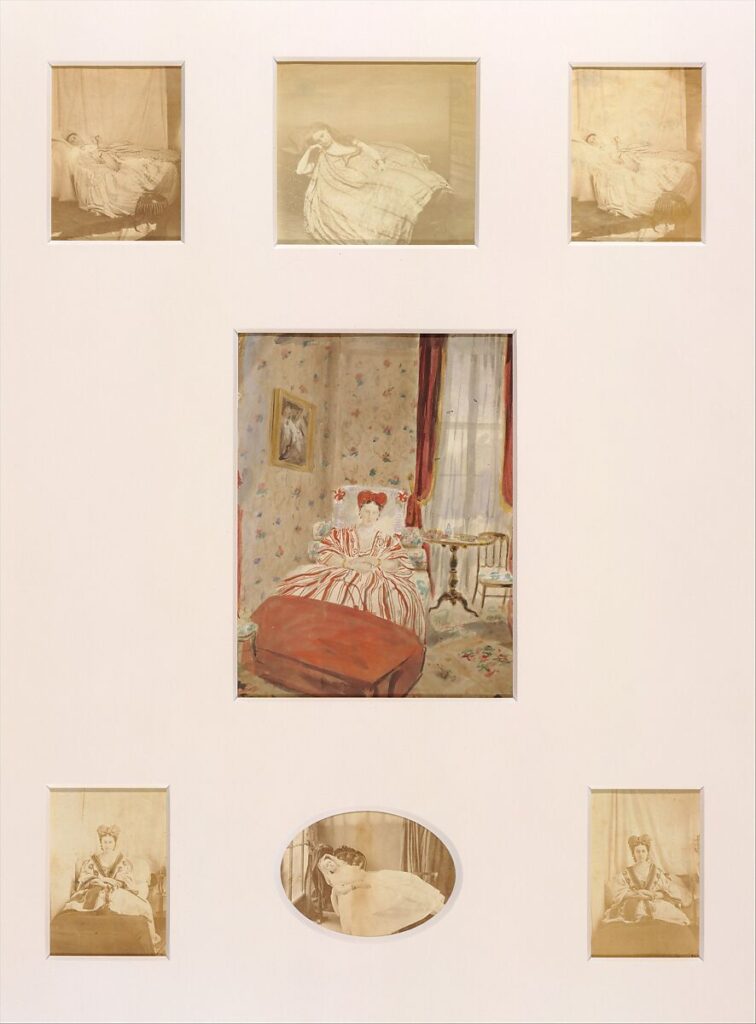
MetMuseum
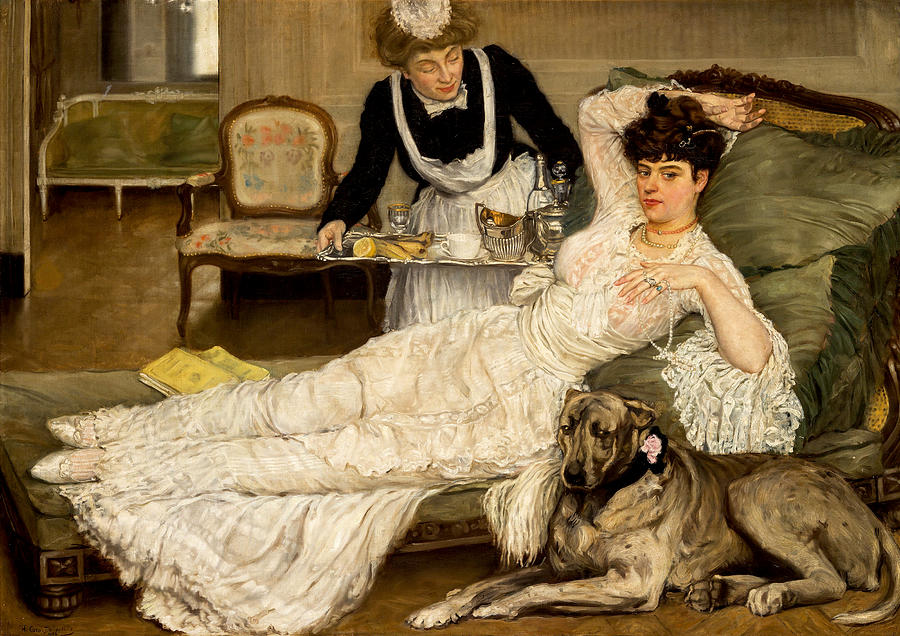
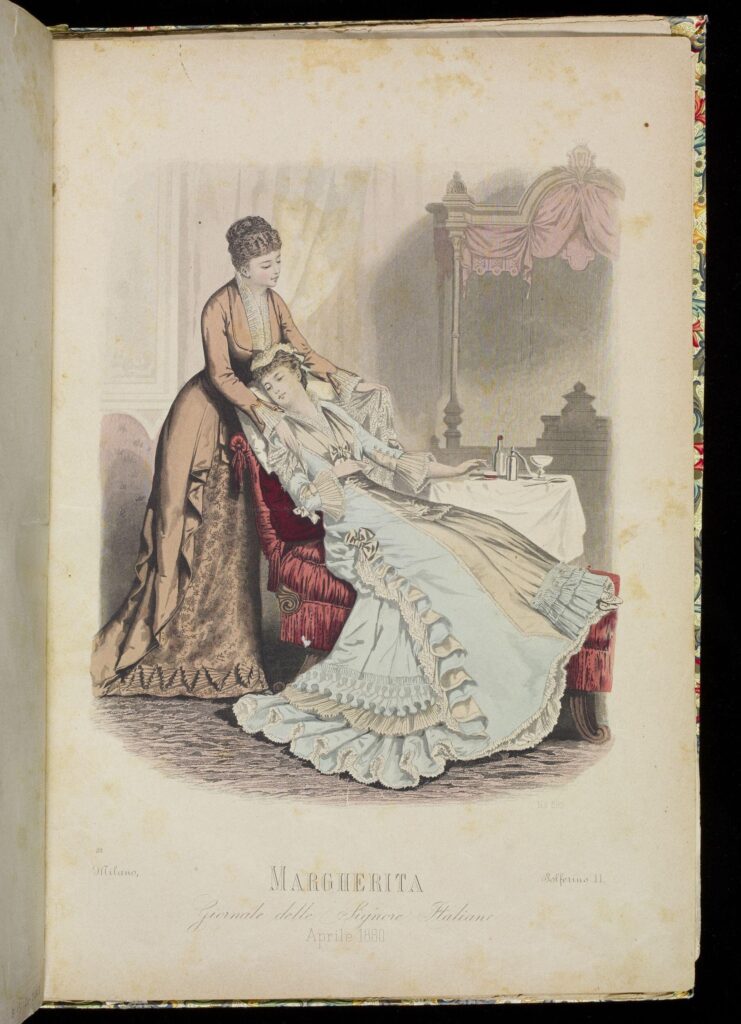
And now you know!

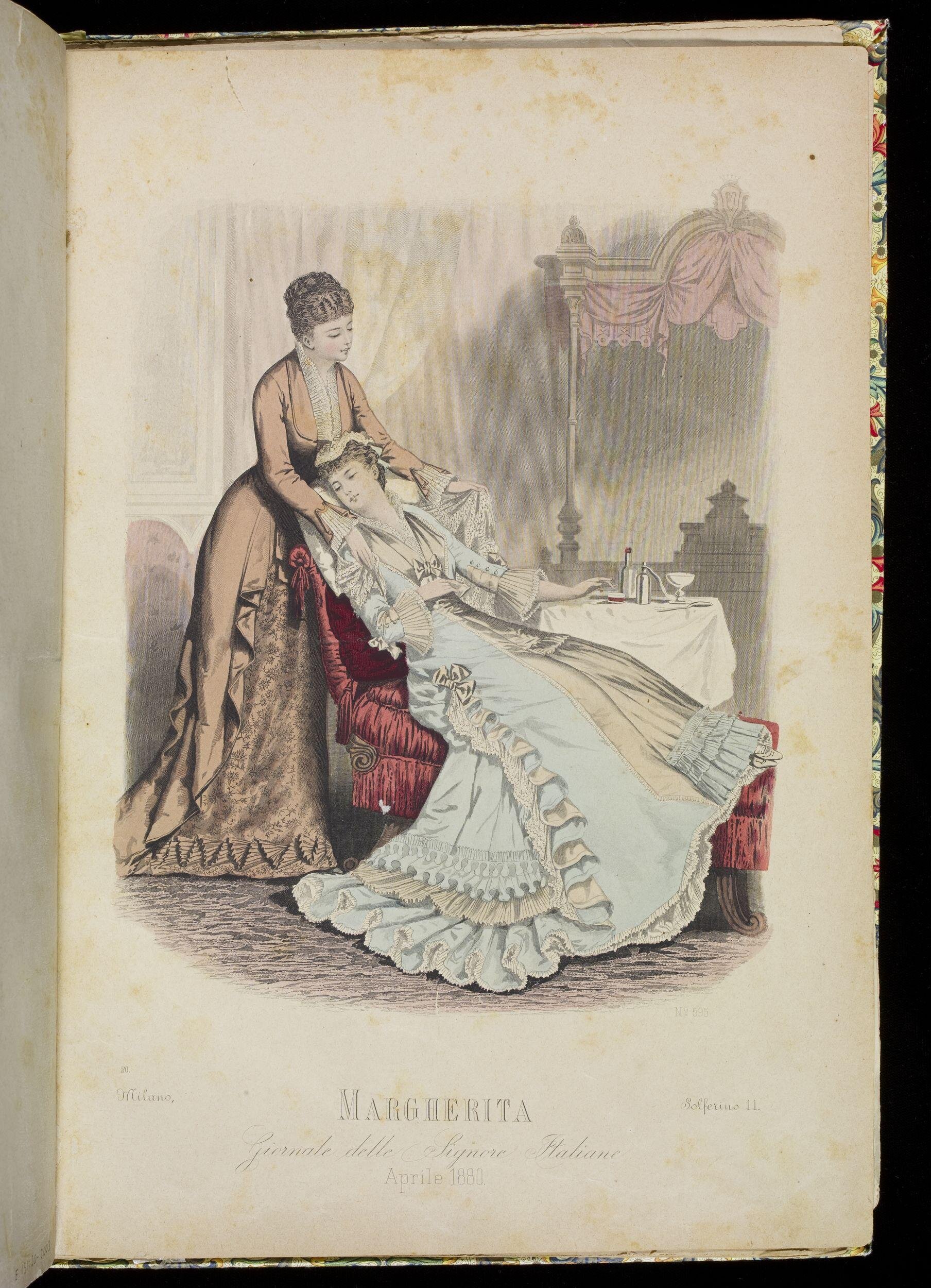






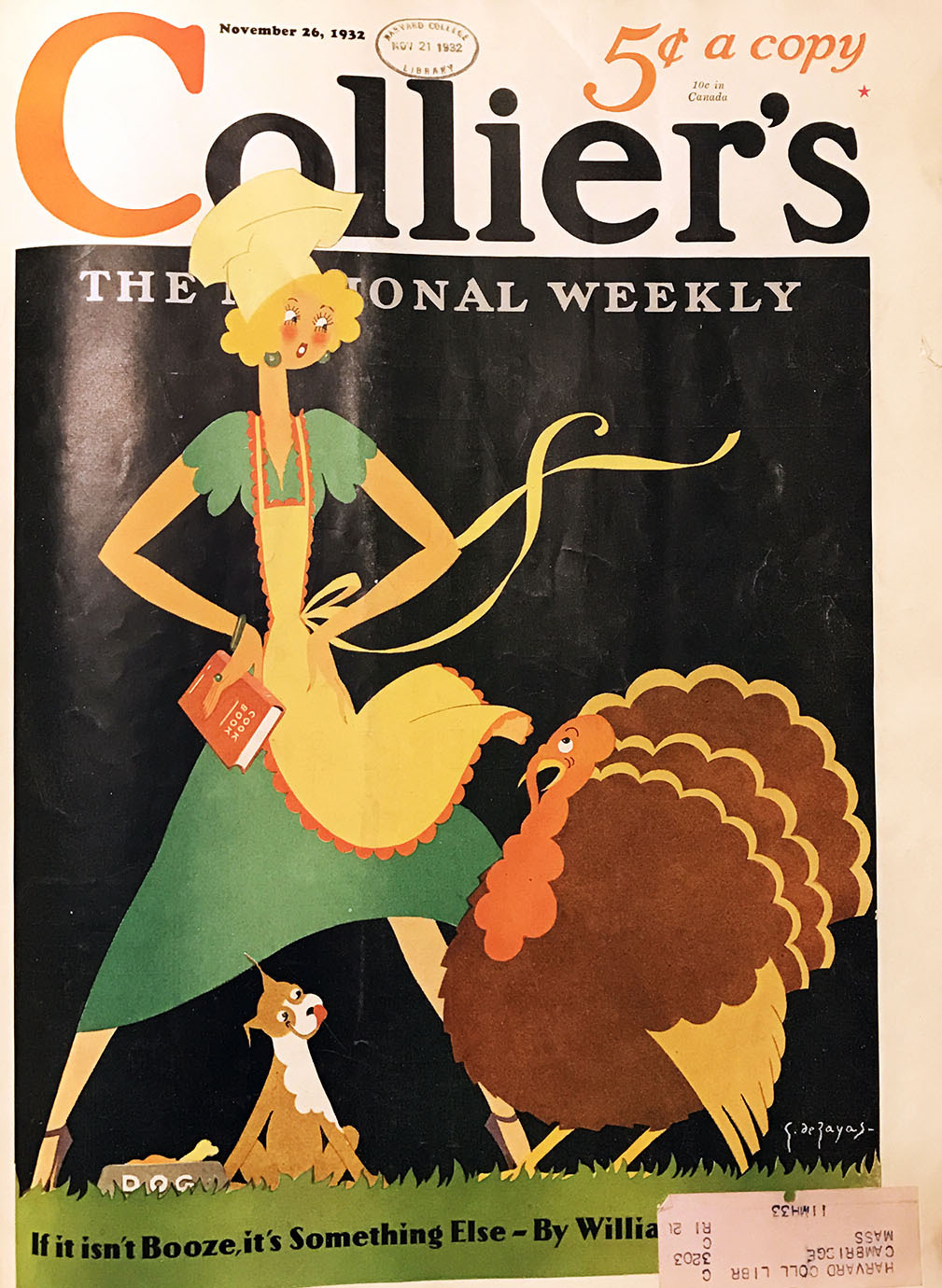


Thanks, Elizabeth!
I like that you dispelled the myth of the fainting couch, I have a beautiful one myself currently mostly used to house my stuffed animal collection at the moment. But I do feel the need to point out that they did wear corsets in the Regency period, they were just a different shape. They followed the high waisted fashion of the time and extended down to just above the hip. There were some daring young ladies in France and some in Britain who went without under their dampened diaphanous skirts but they were “the worst excesses of the French Revolution as Lady Bracknell says in Importance of Being Earnest. It was those daring costumes that the Victorians were trying to get away from with their restrictions on clothing and other things.